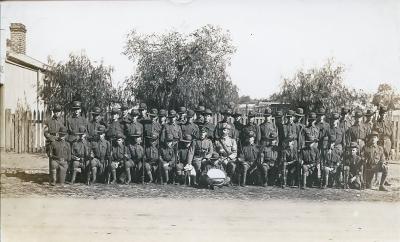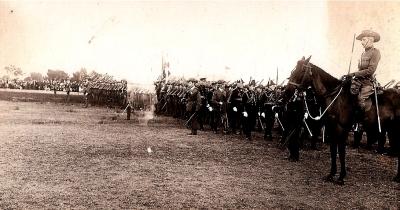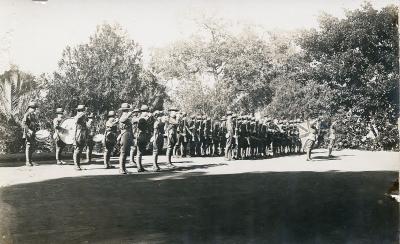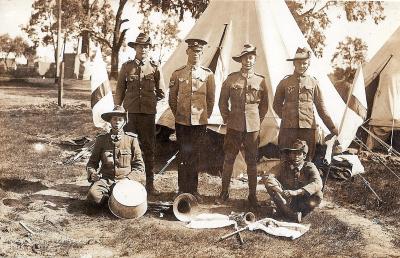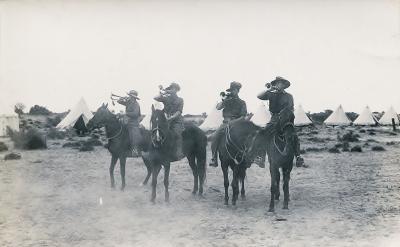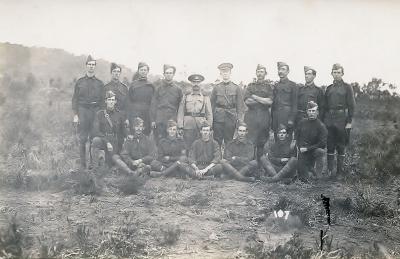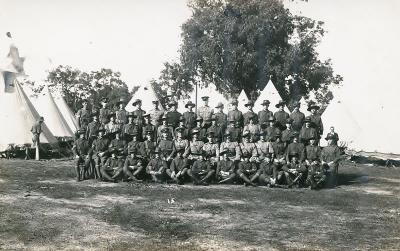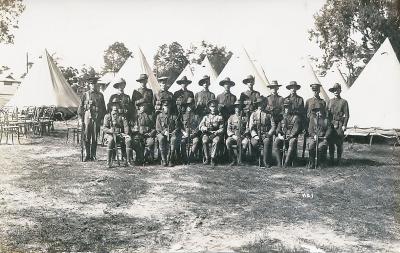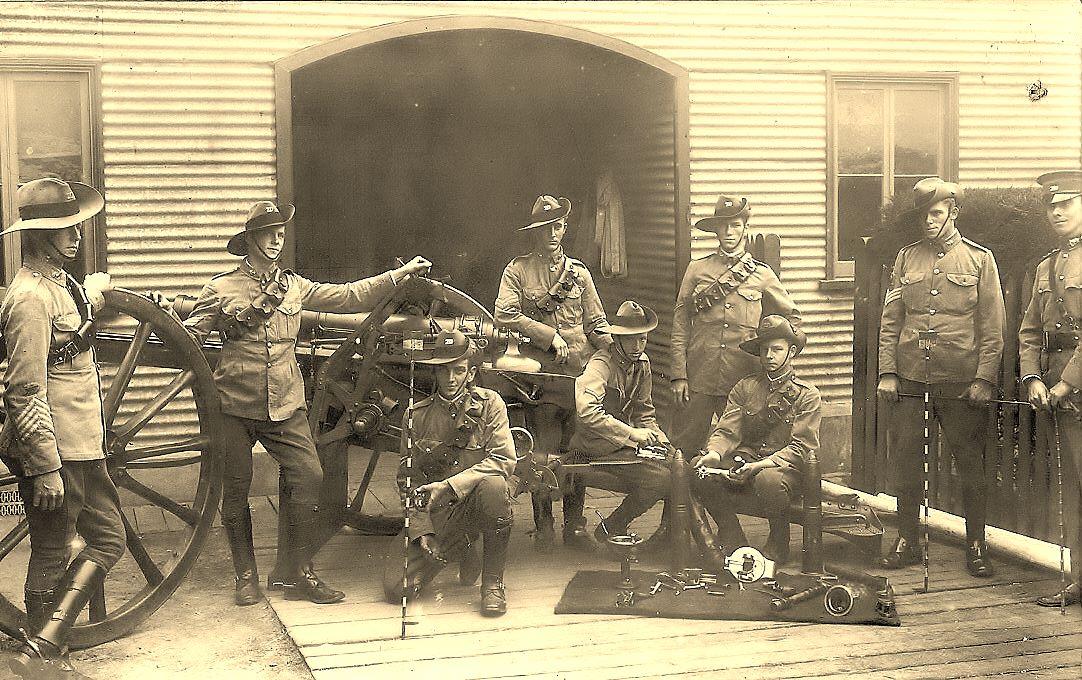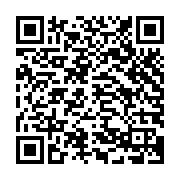Pre 1914, Australia Western Australia, Perth, Artillery Drill Hall, 38 Battery, Australian Field Artillery,1913
1912Militia gunners with 18 pounder field gun
Prime Minister Deacon introduced compulsory military training in 1911. This had a dramatic effect on the numbers of troops available at the outbreak of WW1, as well as the level of training. This compulsory training applied to school army cadets between the ages of 12 and 17 years. When this training was completed, a further two years of recruit training occurred in the militia. This was followed up by service in the militia through to the age of 26. Militia training consisted of 17 days per year, mostly at an annual camp. Artillery and Engineers were required to train for 25 days a year. (Horner, 1995, p. 69) During 1911, No 1 WA Battery was redesignated as No14 Battery Australian Field Artillery under command of Major Bessell-Browne DSO. Additional troops under this scheme added to a second battery being formed by1913, namely 20 Battery Australian Field Artillery. The huge increase in the armed forces led to the renaming of these two batteries in 1914 as No 37 (based at Guildford) and 38 Battery (based in Perth).
Details
Details
The Quick Firing (QF) 18 Pounder was the principal Field Gun of the British Army in World War One. The gun saw service in every theatre of the Great War. Its calibre of 84mm and shell weight made it more brutal and destructive than the French 75mm and German 77mm. Its ammunition had the shell combined with the cartridge thus giving it the description of ‘quick firing’. The gun and its ammunition limber were towed by a team of six light draught horses. A driver was allocated to each two horse team and rode the left horse of each pair. The two wheeled ammunition limber was hooked up to the horses and the trail of the gun was hooked to the limber. Further to this, each gun had two additional ammunition limbers towed by their own team. T
The gun detachments, led by the detachment sergeant on his own horse, rode into action either on the horses or on the limber. During the early stages of the war, an ammunition limber was positioned on the left of the gun, but as the war progressed and larger quantities of ammunition were being used, stockpiles of ammunition were dumped in pits next to the guns.
Open in Google Maps
Nearest geotagged records:
- Interwar, Australia Western Australia Perth, HOBBS, 1935 (0.08km away)
- Interwar, Australia Western Australia Perth, 1932 (0.08km away)
- Pre-World War 1, Australia Western Australia Perth, DONNELLY, 1914 (0.08km away)
- Interwar, Western Australia, Perth, Swan barracks, 5 Military District,1932 (0.08km away)
- Pre 1914, Australia Western Australia, 8 Australian Field Artillery, 1910 (0.09km away)
- Inter War, Western Australia, Perth, Swan Barracks,16 Battalion, 1938 (0.09km away)
- Inter War, Australia Western Australia, 16 Battalion, 1938 (0.09km away)
- Post 1945, Western Australia, Perth, Swan Barracks, 5 Military District, 1990 (0.09km away)
- Post 1945, Western Australia, Perth, Swan Barracks, 5 Military District, 1987 (0.09km away)
- Post 1945, Western Australia, Perth, Swan Barracks, 5 Field Force Group and 5 Military District, 1977 (0.09km away)
Nearby places: View all geotagged records »
Australian Army Museum of Western Australia
Australian Army Museum of Western Australia
Other items from Australian Army Museum of Western Australia
- Pre 1914, Australia, Western Australia, Universal Service Scheme, 1912
- Pre 1914, Australia Western Australia, 1912
- Pre 1914, Australia Western Australia, 1912
- Pre 1914, Australia, Western Australia, 1912
- Pre 1914, Australia Western Australia, 1912
- Pre 1914, Australia Western Australia, 1912
- Pre 1914, Australia Western Australia, 1912
- Pre 1914, Australia Western Australia, 1912
- Pre 1914, Australia Western Australia, 1912
- Pre 1914, Australia, Western Australia, 1912
- Pre 1914, Australia Western Australia, 1912
- Pre 1914, Australia Western Australia, 1912
